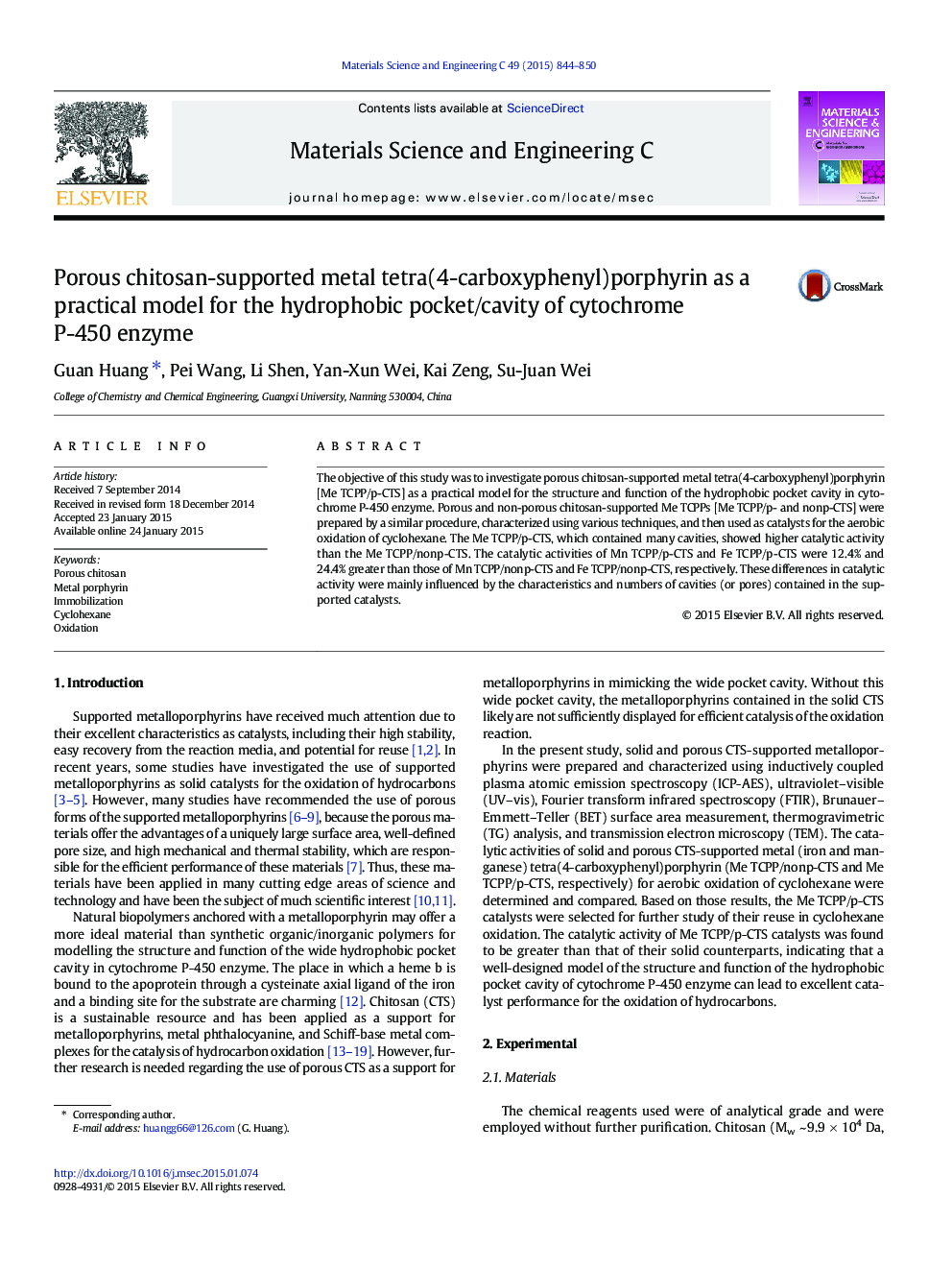| Article ID | Journal | Published Year | Pages | File Type |
|---|---|---|---|---|
| 1428244 | Materials Science and Engineering: C | 2015 | 7 Pages |
•The specific surface area of Me TCPP/p-CTS was 12–14 times than that of Me TCPP/nonp-CTS.•The activity of Me TCPP/p-CTS was 12–24% greater than that of Me TCPP/nonp-CTS.•Porous chitosan plays a key role in the increased activity for cyclohexane oxidation.
The objective of this study was to investigate porous chitosan-supported metal tetra(4-carboxyphenyl)porphyrin [Me TCPP/p-CTS] as a practical model for the structure and function of the hydrophobic pocket cavity in cytochrome P-450 enzyme. Porous and non-porous chitosan-supported Me TCPPs [Me TCPP/p- and nonp-CTS] were prepared by a similar procedure, characterized using various techniques, and then used as catalysts for the aerobic oxidation of cyclohexane. The Me TCPP/p-CTS, which contained many cavities, showed higher catalytic activity than the Me TCPP/nonp-CTS. The catalytic activities of Mn TCPP/p-CTS and Fe TCPP/p-CTS were 12.4% and 24.4% greater than those of Mn TCPP/nonp-CTS and Fe TCPP/nonp-CTS, respectively. These differences in catalytic activity were mainly influenced by the characteristics and numbers of cavities (or pores) contained in the supported catalysts.
Graphical abstractFigure optionsDownload full-size imageDownload as PowerPoint slide
